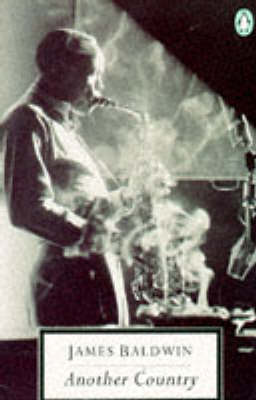Black Swan S.
4 total works
"Brilliantly and fiercely told." —The New York Times
Nominated as one of America’s best-loved novels by PBS’s The Great American Read
One of the BBC's '100 Novels That Shaped Our World'
Baldwin's ground-breaking second novel, which established him as one of the great American writers of his time
David, a young American in 1950s Paris, is waiting for his fiancee to return from vacation in Spain. But when he meets Giovanni, a handsome Italian barman, the two men are drawn into an intense affair. After three months David's fiancee returns and, denying his true nature, he rejects Giovanni for a 'safe' future as a married man. His decision eventually brings tragedy.
Filled with passion, regret and longing, this story of a fated love triangle has become a landmark of gay writing. James Baldwin caused outrage as a black author writing about white homosexuals, yet for him the issues of race, sexuality and personal freedom were eternally intertwined.
'Exquisite... a feat of fire-breathing, imaginative daring' Guardian
'Excruciating beauty' San Francisco Chronicle
'Audacious... remarkable... elegant and courageous' Caryl Phillips
“Vivid imagery…lavish attention to details…. [A] feverish story.” —The New York Times
Originally published in 1953, Go Tell It on the Mountain—based in part on James Baldwin’s childhood in Harlem—was his first major work. With a potent combination of lyrical compassion and resonant rage, he portrays fourteen-year-old John Grimes, the stepson of a fire-breathing and abusive Pentecostal preacher in Harlem during the Depression. The action of this short novel spans a single day in John’s life, and yet manages to encompass on an epic scale his family’s troubled past and his own inchoate longings for the future, set against a shining vision of a city where he both does and does not belong. Baldwin’s story illuminates the racism his characters face as well as the double-edged role religion plays in their lives, both oppressive and inspirational.
In prose that mingles gritty vernacular cadences with exalted biblical rhythms, Baldwin’s rendering of his young protagonist’s struggle to invent himself pioneered new possibilities in American language and literature.
Everyman's Library pursues the highest production standards, printing on acid-free cream-colored paper, with full-cloth cases with two-color foil stamping, decorative endpapers, silk ribbon markers, European-style half-round spines, and a full-color illustrated jacket. Contemporary Classics include an introduction, a select bibliography, and a chronology of the author's life and times.
'Few, it seems to me, have driven their words with such passion' Guardian
How our earliest experiences can shape our destiny is the theme that runs like a thread of revelation through these extraordinary stories. They explore the roots of love, of murder and of racial conflict, from the child in 'The Rockpile' who can never be forgiven by his God-fearing father for his illegitimacy to the loneliness of a young black girl in love with a white man who, she knows, will leave her in 'Come Out of the Wilderness' and the horrifying story of the initiation of a racist as a man remembers his parents taking him to see the mutilation and murder of a black man in 'Going to Meet the Man'. In them Baldwin unlocks the concepts of history and prejudice and probes beneath the skin to the soul.



